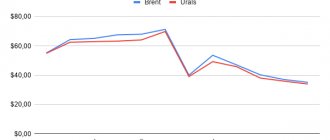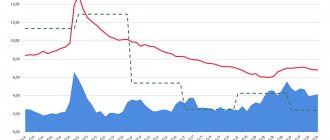The oil market experienced a real shock in 2021. The demand for “black gold” fell at a record speed in history, so that prices even went into negative values. Experts and oil companies began to admit that the situation may never be corrected. The coronavirus has given a boost to the green energy industry, which has seized cash flows and increasingly looks like a doom for the industry. The end of the era of hydrocarbons - in the material of Lenta.ru.
A year ago, the world's oil companies looked to the future with cautious optimism. Prices were then at the level of 60-70 dollars per barrel for Brent, and at the end of the year they gradually began to rise. The world's largest manufacturers have generally adapted to this cost. The Saudi state-owned company Saudi Aramco even managed to carry out the largest entry into the stock exchange in history, even if the demand was largely pushed by the kingdom itself.
Rumors of another Chinese disease did not seem like a serious threat at first. But the quarantine imposed in China scared the market. Due to decreased demand in the world's second economy, prices plummeted - in just a month, a barrel of Brent lost $15. In February, the coronavirus arrived in Europe, and oil fell another 20 percent, to $45.
Brent from TradingView
Price regulation in recent years has been the responsibility of the OPEC+ agreement, which included the Organization of Exporting Countries (OPEC) led by Saudi Arabia and independent producers, including Russia. At the end of 2021, it seems obvious that production should have been reduced as sharply as possible, but in March the parties failed to reach an agreement. Moscow proposed to wait a little longer and extend the parameters in force at that time. Riyadh demanded an increase in quotas by another 1.5 million barrels. And on March 6, the parties announced the termination of cooperation starting next month. It also became known that Saudi Arabia is going to sharply increase production and reduce prices, which market participants regarded as a declaration of a trade war on competitors.
Against this background, oil prices very quickly fell below $30 per barrel. Nobody expected such values; in Russia they considered the maximum price to be 40 dollars. Further - more: the increase in exports in April led to an “impossible” cost - minus $ 40 per barrel - for the American benchmark oil WTI. This price lasted less than a day, but managed to shock everyone.
Related materials
00:01 — April 9, 2020
Peace in time of plague
The oil crisis is forcing Russia to find a common language with the United States and Saudi Arabia.
Otherwise, no one will survive 00:01 — May 12, 2020
Full tank
There is more and more oil in the world.
How does this threaten the economy? Never before in history has a seller offered to pay the buyer extra if he would simply take the oil. The situation is connected with the peculiarity of trading in oil futures and the overflow of reservoirs in the American Cushing - it turned out that there was nowhere to store the “black gold” or it was very expensive. At the same time, other exporters poured oil first into large tankers, then into medium-sized ones, and they stood at sea for months and waited, creating traffic jams.
Therefore, production without restrictions lasted only a month - already on April 12, 23 states, including OPEC countries and Russia, signed a new agreement. It was assumed that until July it would be reduced by 9.7 million barrels per day, then by 7.7 million, and from January 2021 to April 2022 by 5.8 million. And almost immediately the contract had to be adjusted.
First, the maximum restrictions were extended for a month, and in December it was decided that from January they would amount to only 7.2 million. Oil prices no longer fell to their minimum levels, but by the end of the year they only reached $50 per barrel. And not only the second wave of coronavirus is to blame for this.
The state of shock into which the oil industry plunged in 2020 can only be compared with the situation 35 years ago. In 1985, Saudi Arabia increased oil production fivefold - from two million barrels per day to ten. The cost of raw materials fell 3.5 times. For the next 15 years it hovered below $40 per barrel. That man-made crisis destroyed the USSR and secured the 1990s for Russia. Domestic conspiracy theorists are confident that in this way the United States dealt a fatal blow to its main geopolitical competitor, the Soviet Union, but, most likely, Washington simply took advantage of the opportunity and pushed the falling one.
The fact is that in 1967, due to the Arab-Israeli conflict, leading oil exporters, opponents of Israel, banned supplies to the USA, Great Britain and partially to Germany. In 1973, they extended the embargo and began to reduce production. The cost of raw materials soared, the USSR increased exports and became addicted to petrodollars. In the 1970s alone, its income from oil supplies increased 15 times. But a sharp drop in prices allowed OPEC to regain market share.
A closed gas station in the United States during the 1973 crisis
Photo: AP
Meanwhile, the USSR was not the only one affected. Over the 20 years since then, American oil workers have reduced production by one and a half times - from more than 10 million barrels per day to 6.5 million. In the key state of Texas for the American oil industry, the crisis manifested itself even more clearly - production fell by more than half. The United States is less dependent on oil, so the circumstance did not become critical, but it spurred the development of technology.
We are talking about the shale revolution. Large-scale industrial development of shale rocks began in 2002, but a breakthrough occurred only in the 2010s. At the beginning of 2014, the United States was already producing more than 3.6 million barrels per day of shale oil, so overall production for the year increased to 8.7 million.
The country has not only become a net exporter of raw materials, it has set its sights on leadership in the industry. As in the mid-1980s, OPEC responded to the threat to its market share and refused to tighten quotas. Saudi Arabia also began to reduce prices - in February 2015, the cost of supplies to China fell to a 14-year minimum. There were opinions in Russia that Saudi Arabia was following orders from the United States and was punishing Moscow for the events in Ukraine. In reality, the main task was to stop the expansion of shale oil and bring American oil workers to bankruptcy.
Photo: Matt Slocum/AP
In early January 2015, Brent fell to $45, and in January 2016, even below $30. Such levels turned out to be critical for OPEC countries. As a result, on November 30, 2021, the cartel agreed to reduce production by 1.2 million barrels per day. It was joined by 11 non-OPEC countries, which agreed to a cumulative production cut of 558 thousand barrels per day. Russia's share included 300 thousand barrels.
12.23
million barrels per day
was the average oil production in the United States in 2021
But all these measures did not help solve the main problem. The US continued to increase production. In November 2021, production reached 12.86 million barrels per day, and the average for the year was 12.23 million.
Something had to be done with American companies, because the expectation that they themselves would leave the market was clearly dragging on. Moreover, the volumes that OPEC+ countries were reducing were taken up by competitors from the United States. Another attempt to bring down prices threatened the existence of OPEC, because the organization includes, among others, not the richest countries.
Meanwhile, Washington’s influence on the global oil market goes far beyond production levels. Under Donald Trump, legal access to the world oil market was closed to Iran and Venezuela, large and influential members of OPEC. The United States also significantly influences oil production in Iraq, not to mention military and economic ties with Arab countries. Therefore, when the head of the White House, at the height of the crisis, began to threaten Saudi Arabia with stopping its imports to the United States, the threat was taken very seriously.
In this sense, the coronavirus epidemic might seem like a suitable occasion for a new price drop. Russia has ruined its relations with the United States enough to not be afraid of new problems, except for some instability in the market. This is probably what the negotiators from Moscow were counting on when they rejected an increase in quotas in February-March. This was due to an underestimation of future problems, including due to the fact that the coronavirus has not yet arrived in Russia.
The error became clear very quickly. As travel around the world plummeted and air travel fell to almost zero, oil refineries found themselves with nowhere to put their products.
No one was prepared for such a development of events. According to Rystad Energy experts, as of the end of April, oil storage facilities around the world were almost 90 percent full, and even then, space in many of them had been purchased in advance. There were even proposals to store oil not only in tankers, but also in pipelines, tanks and caves. A catastrophe was avoided, but the economies of oil-producing countries were bursting at the seams.
Saudi Arabia, which went all-in in April, was forced to take on additional obligations in June - in order to increase prices, the kingdom voluntarily reduced production by another million barrels per day. Riyadh was prompted to do this by unprecedented problems in the economy. To save the budget, the country raised customs duties on a number of categories of imported goods, the list of which took up 74 pages, tripled the value added tax and refused to pay a living wage. In addition, the sovereign fund ventured into risky investments, which is a fairly rare tactic for government agencies.
Photo: Gleb Shchelkunov / Kommersant
The consequences for Russia were no less serious. Oil exports through the Transneft pipeline system, according to preliminary data, fell to 195 million tons over the year (minus 26.9 million tons compared to 2019) - the lowest level since 2004. According to the Federal Customs Service (FCS), over the nine months, income from oil supplies abroad fell by 40.3 percent compared to last year, to $54.6 billion, and the physical volume of exports fell by 10 percent.
The sharp reduction in oil production itself also brought difficulties. Technologies do not allow one to quietly mothball a well and then promptly defrost it; meanwhile, there are no containers for storing raw materials in the country. In April, experts did not even rule out that small Russian companies would start burning oil in order not to lose wells. Judging by the disputes that accompanied the negotiations on the distribution of quotas, it was not possible to do without losses at all. The former chief geologist of the Russian State Commission for Mineral Reserves, Roman Sudo, warned in advance about this development of events.
Unlike Saudi Arabia, troubles for Russia are not limited to low oil prices. The fact is that the price of gas in contracts, as a rule, is tied to oil prices with a lag of more than six months. As a result, Russian fuel was too expensive for customers for a long time. Turkey, once the second largest importer of Russian gas, has almost stopped purchasing, and China has not even chosen the minimum for the just launched Power of Siberia gas pipeline. In the first nine months, Gazprom received a net loss of 592.15 billion rubles according to RAS (Russian reporting standard). A year ago, he had 434.94 billion rubles in profit. In general, oil and gas revenues of the Russian federal budget collapsed over three quarters by 36 percent compared to the same period last year.
Photo: Ramzi Boudina / Reuters
Smaller participants in the transaction cannot withstand too long a period of low prices and strict restrictions. In the fall, the UAE demanded fairer quotas, and Iraqi authorities began hinting that they did not have the money to sell so little oil. By the end of the year, the conflicts were extinguished, but they can flare up again at any moment, because the global economic crisis is in full swing.
But the main problem is that the number of drilling rigs in the United States - the main sign of an imminent increase in production - has been rising for more than a month. In other words, betting on American oil leaving the market after a temporary price decline still doesn't work. In addition, shale oil development technologies make it possible to reduce and increase production almost painlessly, which makes North American companies more flexible. But agreeing with them on quotas seems unrealistic. US law prohibits price fixing, and there is no single government regulator for the industry in the country.
The crisis could be considered unpleasant, but not fatal, if not for the second circumstance, which by the end of 2021 can no longer be ignored. We are talking about the development of green technologies. Even in the recent past, it was customary in Russia not to take them seriously, like shale oil and gas in the 2000s, but now there is a lot of money behind them.
When will the Ministry of Finance start selling foreign currency?
The Ministry of Finance, despite the day off, has already made a statement that it will begin selling foreign currency from reserves, since oil prices have fallen below the budgeted cut-off price of $42.4 per barrel for Urals. On Monday, the discount of Russian Urals oil to the world grade Brent exceeded $3. In March, the Ministry of Finance planned to purchase about $2 billion of foreign currency on the market, but the Central Bank on March 9 decided to temporarily stop foreign currency purchases carried out in the interests of the Ministry of Finance.
From April, the Central Bank will most likely begin selling foreign currency if Urals oil does not recover to at least $42.4 per barrel, Kirill Tremasov, director of the analytical department of Loko-Invest, notes in his Telegram channel.
According to the current design of the budget rule, transactions are calculated based on the planned price of oil, and not the actual price. “Naturally, they [the Ministry of Finance] can react instantly by adjusting the forecast for the price of oil,” says Renaissance Capital economist for Russia and the CIS Sofya Donets, admitting that currency sales could begin as early as Tuesday, March 10.
Related materials
00:02 — June 4, 2020
Climate weapons
Europe has its sights set on world domination.
The environment and coronavirus will help her 00:27 - January 18, 2020
Green madness
Humanity strives to save nature.
Why could this collapse the world economy? In 2021, one of the most high-profile events in the world was the movement of Greta Thunberg, which brought public interest in global warming and harmful emissions to a new level. The Swedish schoolgirl met with world politicians and businessmen, organized major rallies, and Time magazine named her person of the year. Amid this uproar, Europe approved a radical plan to overhaul its economy. The environmental projects approved at the end of 2019 were valued at a trillion euros in the first ten years.
Coronavirus, firstly, has given environmentalists clear arguments - it is about reducing emissions and immediately improving the environmental situation due to the shutdown of enterprises and a decrease in car traffic. But, secondly, and this is the main consequence, the crisis that arose required serious changes in the development plans of states. The largest companies in Europe and the United States demanded that governments combine economic aid packages with a green agenda. Throughout the year, investment funds, one after another, have been tightening their requirements for companies regarding emissions. Politicians in the West set themselves more and more ambitious goals, as if competing with each other.
In December, 30 of the world's largest asset managers, with assets worth nine trillion, launched the green initiative Net Zero Asset Managers. They have committed to tightening investment requirements to make their portfolios carbon neutral by 2050 or sooner. They also confirmed that they will support investments that will help achieve net-zero emissions targets. The latter factor should not be discounted, since investment funds are often included in the capital of other investment companies. This means that their influence on investment policy is much wider than their own assets.
The New York State Pension Fund, the third-largest U.S. pension fund with more than $200 billion in assets, has vowed to impose environmental demands on oil and gas companies. They have four years to fulfill them, otherwise the fund will get rid of their securities. And there is no doubt that other major Western investors will follow his example.
The change in priorities is especially noticeable in the example of the American Exxon and Tesla, an oil company and a manufacturer of electric vehicles. The first - in a decade, went from being the largest company in the world to being dropped from the Dow Jones Industrial Average after 92 years of participation (it is inferior in value even to NextEra Energy Inc., which is engaged in solar and wind energy). The second, despite relatively small production, rose in price eight times over the year and made its founder Elon Musk the second richest person in the world.
Tesla from TradingView
Bans at the government level have also accelerated in developed countries. Japan and South Korea have pledged to eliminate carbon dioxide emissions by 2050. In California, the sale of gasoline cars will be banned by 2035, and in the UK, a ban on cars with internal combustion engines is expected by 2030, and hybrids - after another five years. By 2040, Daimler, Scania, Man, Volvo, Daf, Iveco and Ford have agreed to completely stop producing fossil fuel-powered trucks.
And so that no one has any doubts about the chosen tactics, Europe, despite the new lockdowns, agreed that by 2030 it would reduce carbon emissions not by 40 percent, but by 55 percent compared to 1990.
Many predict that maximum oil consumption is approaching. Among them are the Norwegian Equinor, which is talking about 2027-2028, the Norwegian Rystad Energy, which is betting on 2028, and the French Total SA, which is taking oil for a couple more years. Moreover, even OPEC agreed that the era of hydrocarbons is coming to an end, although not so soon - only in 20 years.
Meanwhile, Bloomberg does not rule out that oil consumption in the world will never return to the level of 2021, and hopes for a quick recovery will collapse. The authors point out that other forecasts did not take into account political will and consumer loyalty to new technologies. For example, Tesla's records cannot be explained by Musk's personality alone - Daimler and Volkswagen doubled sales of electric vehicles despite a record drop in overall sales. The material compares the situation with the one in which the coal industry finds itself. US fuel demand was at its peak in 2008, but nine years later Peabody Energy, formerly the world's largest coal producer, went bankrupt.
Photo: Kristina Barker/Reuters
Experts from the British oil giant BP also agree with the journalists and no longer expect anything good from oil. According to the new strategy, the company will reduce hydrocarbon production by 40 percent by 2030, stop investing in new oil and gas projects and curtail geological exploration.
Calculations confirming that natural gas is cheaper than shale gas, and alternative energy is less reliable and more expensive than hydrocarbons or nuclear power plants, can remain as true as desired, but when it comes to developed countries, this circumstance is not so important. Even in everyday life, buyers who do not count every penny agree to overpay for a brand with a good history, for reliability and good packaging. If technically alternative energy can replace hydrocarbons, it will replace them.
What is happening in the oil market can be compared to a repeated stroke in a person, after which few can survive or fully recover. The first time, in 1985, oil producing companies and states managed to cope due to the fact that there was nothing to replace oil with. Although even then the crisis became the beginning of a structural restructuring of the economies of Western countries and created the conditions for a new stage of the scientific and technological revolution. But the current situation is fundamentally deeper. The abandonment of hydrocarbons was inevitable in principle, but now the oil industry is being forcibly deprived of oxygen, that is, of investment.
Environmentalists have long argued that the transition to green technologies is being hampered by the oil lobby, which receives windfall profits. In 2021 this brake has disappeared
Russia’s position on all these radical changes can hardly be called formed. On the one hand, the country’s President Vladimir Putin admits that in five years the demand for “black gold” will begin to fall, and Energy Minister Alexander Novak does not see prospects for hydrocarbons due to the climate agenda and the reduction in the cost of their production technologies. Moreover, he points out that with oil prices around $45 per barrel, Russia may never restore oil production. Against this background, Gazprom is already thinking about future supplies of hydrogen rather than natural gas to Europe, hoping for contracts and arguing about which version of this fuel is the most environmentally friendly.
What to expect from the ruble
The fiscal rule mechanism, which smoothes out fluctuations in the ruble during price volatility in the oil market, works quite successfully: when oil prices fell by 20–25%, the ruble exchange rate fell on March 9 by no more than 9%. The Ministry of Finance's open market operations for the sale of foreign currency will compensate for the reduction in the inflow of foreign currency from the export of oil and petroleum products, “having a stabilizing effect on the exchange rate of the national currency,” the Ministry of Finance said.
The average annual exchange rate with oil at $30 will be 75 rubles. per dollar, says Yegor Susin, head of the Gazprombank Strategy Development Center. True, at the moment the ruble may fall to the level of 85 rubles. per dollar, if the demand for foreign currency from the population and non-residents who hedge currency risks increases sharply, Susin adds.
Oil deal between Russia and OPEC falls apart Economy
If the dollar costs 75 rubles, the price of oil for a deficit-free budget should be $40 per barrel, estimates Chris Weafer.
The budget rule has reduced, but not completely eliminated, the ruble’s dependence on oil, notes Sofia Donets. According to her estimates, with oil at $40, the average dollar exchange rate could be 74 rubles, with oil at $30 - about 84 rubles.











